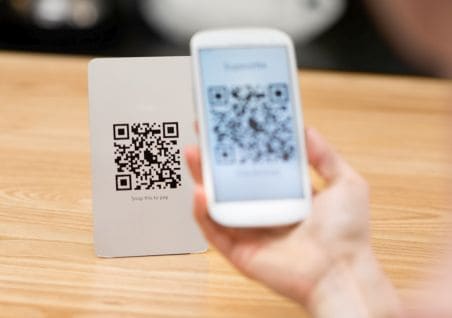- Cashless Bano India/
- Features/
- The Multiple Benefits of The Insurance Sector Going Cashless
The Multiple Benefits of The Insurance Sector Going Cashless

New Delhi: Since the announcement of demonetisation in November 2016, the cashless mantra is doing the rounds across all economic sectors in India. The insurance sector in India is an industry which has seen the participation of both public and private players. The life insurance sector generates annual revenue of Rs 4,02,000 crore and the general insurance sector generates annual revenue of Rs 73,700 crore. The industry has evolved over the years with various types of insurances being offered today, as well as becoming an industry which is steadily decreasing its dependence on cash. But how viable is a cashless insurance sector? Considering how millions of Indians are covered under various insurance schemes, can the sector truly follow a cashless model?
Unlike earlier days, the buying of an insurance policy, either life insurance or general insurance can now be conducted online, complete with premium payment. While that lessens the age-old procedure of being dependent on insurance agents and paying premiums through cash or cheque, it also brings up certain aspects of the cashless model in the sector which should be looked at.
Digitally Paying Premiums
Cashless payment of insurance premiums is now a reality. General and health insurance premiums, irrespective of whichever bank the insurance policy belongs to can be paid via debit or credit cards, netbanking or mobile wallets such as Paytm. Cashless premiums have also been introduced for agricultural insurance by both private banks as well as by National Bank for Agricultural and Rural Development (NABARD). Provisions have also been arranged by private banks in which the premium amount is directly deducted from the bank account. In rural areas, crop insurance premiums are deducted directly, but for farmers with Jan Dhan Yojana accounts without enough balance, direct deduction is often not possible and they have to opt for paying in cash. The insurance sector is yet to bring farmers wholly under its ambit, because they are yet to adopt the cashless model in paying agri-insurance premiums.
"The cashless model, when it comes to payment of crop insurance premiums is slightly difficult to implement as the penetration of digital banking in remote areas is less. Further, Jan Dhan Yojana accounts are often without adequate balance so deduction of premiums is also not an option. If farmers learn how digital banking works, payment of premiums will become easier and regular," said M.V. Ashok, Chief General Manager, Department of Economic Analysis and Research, NABARD.
Also Read: Digital Payments: Services That Do Not Need Cash Anymore
The Question of Health Insurance
A major advantage of the sector becoming digitised is how it has impacted health insurance in India. Thanks to a cloud based software developed by Remedinet Technologies, a Bengaluru-based startup, manual data entry and evaluation tasks are minimised to a great extent. The software has been given thumbs up by the Insurance Regulatory Development Authority of India (IRDAI) to ensure cashless hospitalisations are no longer a hassled process, but a more preferred one for patients.
The biggest advantage of cashless health insurance is that hospitalisation and associated services are available even if the patient has no access to cash at the time of admission. Two aspects need to be taken into account, one is the cashless buying and paying of premium of the health insurance policy, which can be conducted by any means of digital banking. The other aspect is the cashless hospitalisation process which ensures that the process requires just the cashless medical card of the patient.
Beneficial for the Sector
Going wholly cashless will benefit the sector as it will lessen the dependency on cash, help in keeping track of premium payers and make it easier to track irregularities. Payments made via digital mediums are fast and reflects on the policy faster, thus reducing the time required to wait when paid via cash or a banking instrument like cheque. But a seamless payment model can only be adopted when people become habituated to paying via digital means, which can happen when penetration of digital banking is even all across India.
For the financial year of 2016-17, following demonetisation, the IRDAI reported that the share of digital payments received by the insurance sector increased to 75 to 80 per cent, but also shared that a major chunk of digital payments came from the urban sector. Private players such as ICICI and HSBC, which have higher urban penetration reported nearly 100 per cent of premiums received via digital methods such as phone banking , net banking or payment wallets. The need of the hour is to bring rural population under the cashless umbrella so that the digital model is fully implemented for the benefit of the sector.
"The penetration of insurance itself is low in rural areas as people are still dependent on cash for emergencies. If the sector is truly looking to become cashless, then rural India needs to be acquainted with insurance policies which can be paid for online, reducing the dependency on cash for any emergency," said Mr Ashok.
Unlike earlier days, the buying of an insurance policy, either life insurance or general insurance can now be conducted online, complete with premium payment. While that lessens the age-old procedure of being dependent on insurance agents and paying premiums through cash or cheque, it also brings up certain aspects of the cashless model in the sector which should be looked at.
Digitally Paying Premiums
Cashless payment of insurance premiums is now a reality. General and health insurance premiums, irrespective of whichever bank the insurance policy belongs to can be paid via debit or credit cards, netbanking or mobile wallets such as Paytm. Cashless premiums have also been introduced for agricultural insurance by both private banks as well as by National Bank for Agricultural and Rural Development (NABARD). Provisions have also been arranged by private banks in which the premium amount is directly deducted from the bank account. In rural areas, crop insurance premiums are deducted directly, but for farmers with Jan Dhan Yojana accounts without enough balance, direct deduction is often not possible and they have to opt for paying in cash. The insurance sector is yet to bring farmers wholly under its ambit, because they are yet to adopt the cashless model in paying agri-insurance premiums.
"The cashless model, when it comes to payment of crop insurance premiums is slightly difficult to implement as the penetration of digital banking in remote areas is less. Further, Jan Dhan Yojana accounts are often without adequate balance so deduction of premiums is also not an option. If farmers learn how digital banking works, payment of premiums will become easier and regular," said M.V. Ashok, Chief General Manager, Department of Economic Analysis and Research, NABARD.
Also Read: Digital Payments: Services That Do Not Need Cash Anymore
The Question of Health Insurance
A major advantage of the sector becoming digitised is how it has impacted health insurance in India. Thanks to a cloud based software developed by Remedinet Technologies, a Bengaluru-based startup, manual data entry and evaluation tasks are minimised to a great extent. The software has been given thumbs up by the Insurance Regulatory Development Authority of India (IRDAI) to ensure cashless hospitalisations are no longer a hassled process, but a more preferred one for patients.
The biggest advantage of cashless health insurance is that hospitalisation and associated services are available even if the patient has no access to cash at the time of admission. Two aspects need to be taken into account, one is the cashless buying and paying of premium of the health insurance policy, which can be conducted by any means of digital banking. The other aspect is the cashless hospitalisation process which ensures that the process requires just the cashless medical card of the patient.
Beneficial for the Sector
Going wholly cashless will benefit the sector as it will lessen the dependency on cash, help in keeping track of premium payers and make it easier to track irregularities. Payments made via digital mediums are fast and reflects on the policy faster, thus reducing the time required to wait when paid via cash or a banking instrument like cheque. But a seamless payment model can only be adopted when people become habituated to paying via digital means, which can happen when penetration of digital banking is even all across India.
For the financial year of 2016-17, following demonetisation, the IRDAI reported that the share of digital payments received by the insurance sector increased to 75 to 80 per cent, but also shared that a major chunk of digital payments came from the urban sector. Private players such as ICICI and HSBC, which have higher urban penetration reported nearly 100 per cent of premiums received via digital methods such as phone banking , net banking or payment wallets. The need of the hour is to bring rural population under the cashless umbrella so that the digital model is fully implemented for the benefit of the sector.
"The penetration of insurance itself is low in rural areas as people are still dependent on cash for emergencies. If the sector is truly looking to become cashless, then rural India needs to be acquainted with insurance policies which can be paid for online, reducing the dependency on cash for any emergency," said Mr Ashok.
Published: June 07, 2017 18:01 IST
About The Campaign

NDTV along with MasterCard is launching a multi-platform campaign “Cashless Bano India”, to create digital awareness and educate the masses about digital payment solutions for day to day transactions.
The campaign aims to take the message of a cash free India to the country, all while educating them on the ways and means to do it.
We aim to reach out to people and educate them on:
1). Digital and financial literacy
2). New generation digital payment solutions
3). Enabling merchants and consumers to understand and adopt secured and safe payment Solutions
4). Ease of usage at point of sales
Comments


